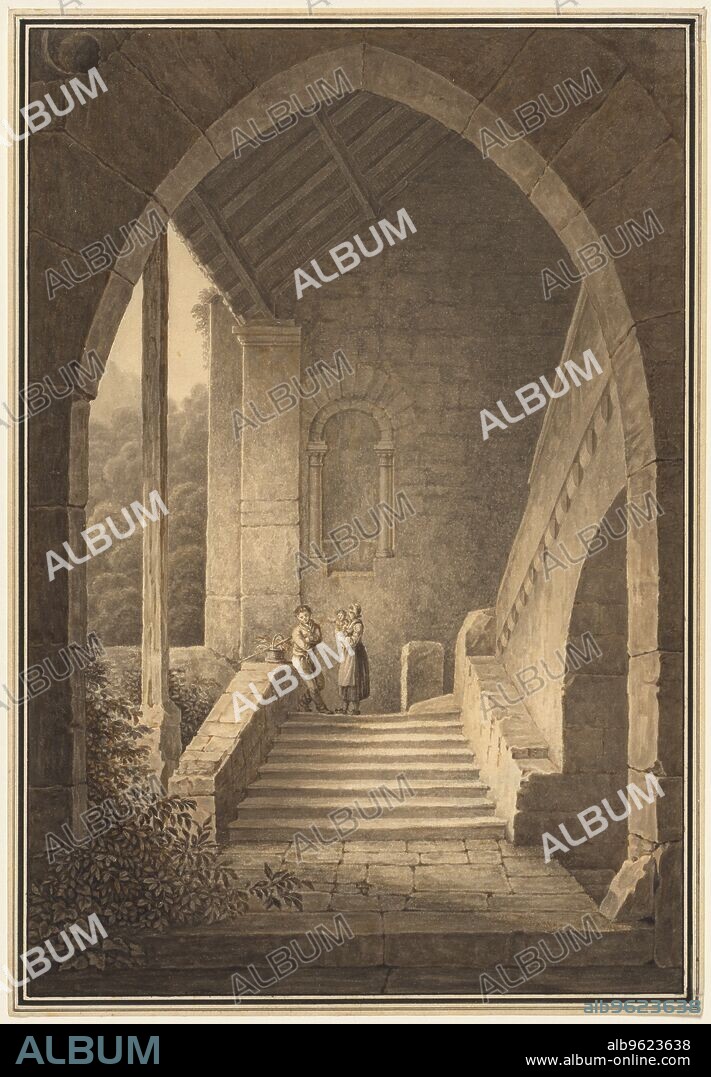alb9623638
Outer Staircase of a Gothic Ruin (Treppenaufgang einer gotischen Ruine), 1830. Creator: Domenico Quaglio (German, 1787-1837).

|
Añadir a otro lightbox |
|
Añadir a otro lightbox |



¿Ya tienes cuenta? Iniciar sesión
¿No tienes cuenta? Regístrate
Compra esta imagen.
Selecciona el uso:

Título:
Outer Staircase of a Gothic Ruin (Treppenaufgang einer gotischen Ruine), 1830. Creator: Domenico Quaglio (German, 1787-1837).
Descripción:
Ver traducción automática
Outer Staircase of a Gothic Ruin (Treppenaufgang einer gotischen Ruine), 1830. Quaglio was recognized as the finest German topographical painter of his generation, and he showed a special affinity for dramatic buildings of the Gothic period. In this watercolour, a young family pauses in the archway of what appears to be a ruined Gothic church. Ivy encroaches upon the stairs, and a dense forest may be seen in the distance. Views of ruined churches juxtaposed by untamed nature frequently appeared in the landscapes of German Romantic artists who believed that nature signified the presence of God. Here, Quaglio contrasts the immensity of the Gothic ruin with the delicacy of the tiny infant. A major component of German Romanticism was the renewal of Gothic architecture as a symbol of Germany’s glorious past. The association of Gothic architecture with Germany was in fact based on the false assumption that a Germanic tribe, the Goths, had originated the style. Nevertheless, medieval ruins and Gothic buildings infiltrated landscapes of the period as symbols of that which was essentially German.
Crédito:
Album / Heritage Art/Heritage Images
Autorizaciones:
Modelo: No - Propiedad: No
¿Preguntas relacionadas con los derechos?
¿Preguntas relacionadas con los derechos?
Tamaño imagen:
3676 x 5295 px | 55.7 MB
Tamaño impresión:
31.1 x 44.8 cm | 12.3 x 17.6 in (300 dpi)
 Pinterest
Pinterest Twitter
Twitter Facebook
Facebook Copiar enlace
Copiar enlace Email
Email
